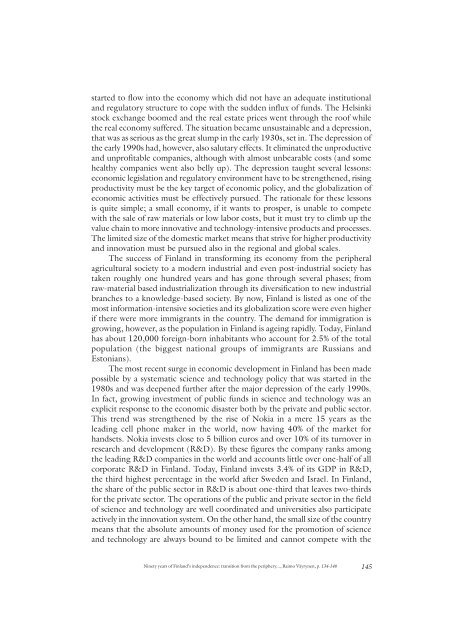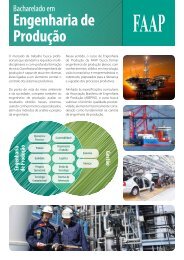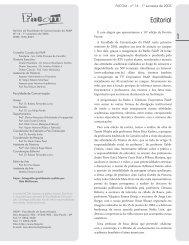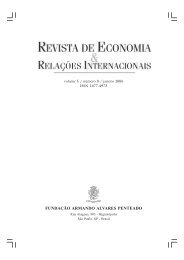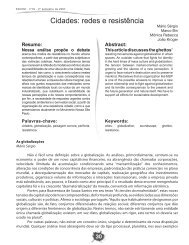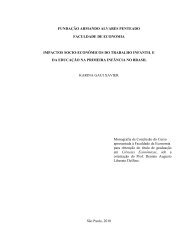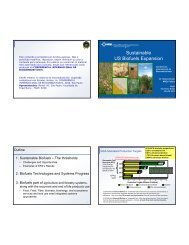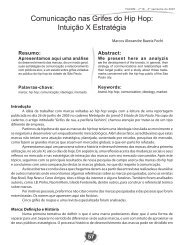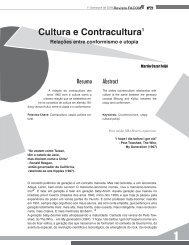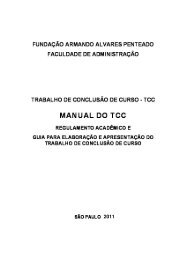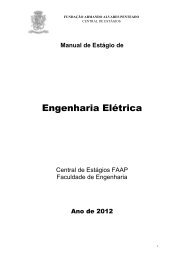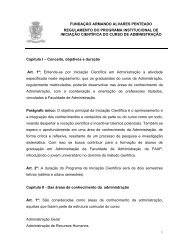Revista Economia n. 13.pmd - Faap
Revista Economia n. 13.pmd - Faap
Revista Economia n. 13.pmd - Faap
You also want an ePaper? Increase the reach of your titles
YUMPU automatically turns print PDFs into web optimized ePapers that Google loves.
started to flow into the economy which did not have an adequate institutional<br />
and regulatory structure to cope with the sudden influx of funds. The Helsinki<br />
stock exchange boomed and the real estate prices went through the roof while<br />
the real economy suffered. The situation became unsustainable and a depression,<br />
that was as serious as the great slump in the early 1930s, set in. The depression of<br />
the early 1990s had, however, also salutary effects. It eliminated the unproductive<br />
and unprofitable companies, although with almost unbearable costs (and some<br />
healthy companies went also belly up). The depression taught several lessons:<br />
economic legislation and regulatory environment have to be strengthened, rising<br />
productivity must be the key target of economic policy, and the globalization of<br />
economic activities must be effectively pursued. The rationale for these lessons<br />
is quite simple; a small economy, if it wants to prosper, is unable to compete<br />
with the sale of raw materials or low labor costs, but it must try to climb up the<br />
value chain to more innovative and technology-intensive products and processes.<br />
The limited size of the domestic market means that strive for higher productivity<br />
and innovation must be pursued also in the regional and global scales.<br />
The success of Finland in transforming its economy from the peripheral<br />
agricultural society to a modern industrial and even post-industrial society has<br />
taken roughly one hundred years and has gone through several phases; from<br />
raw-material based industrialization through its diversification to new industrial<br />
branches to a knowledge-based society. By now, Finland is listed as one of the<br />
most information-intensive societies and its globalization score were even higher<br />
if there were more immigrants in the country. The demand for immigration is<br />
growing, however, as the population in Finland is ageing rapidly. Today, Finland<br />
has about 120,000 foreign-born inhabitants who account for 2.5% of the total<br />
population (the biggest national groups of immigrants are Russians and<br />
Estonians).<br />
The most recent surge in economic development in Finland has been made<br />
possible by a systematic science and technology policy that was started in the<br />
1980s and was deepened further after the major depression of the early 1990s.<br />
In fact, growing investment of public funds in science and technology was an<br />
explicit response to the economic disaster both by the private and public sector.<br />
This trend was strengthened by the rise of Nokia in a mere 15 years as the<br />
leading cell phone maker in the world, now having 40% of the market for<br />
handsets. Nokia invests close to 5 billion euros and over 10% of its turnover in<br />
research and development (R&D). By these figures the company ranks among<br />
the leading R&D companies in the world and accounts little over one-half of all<br />
corporate R&D in Finland. Today, Finland invests 3.4% of its GDP in R&D,<br />
the third highest percentage in the world after Sweden and Israel. In Finland,<br />
the share of the public sector in R&D is about one-third that leaves two-thirds<br />
for the private sector. The operations of the public and private sector in the field<br />
of science and technology are well coordinated and universities also participate<br />
actively in the innovation system. On the other hand, the small size of the country<br />
means that the absolute amounts of money used for the promotion of science<br />
and technology are always bound to be limited and cannot compete with the<br />
Ninety years of Finland’s independence: transition from the periphery..., Raimo Väyrynen, p. 134-146<br />
145


